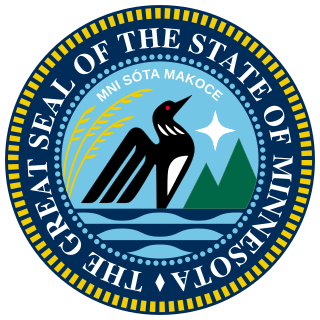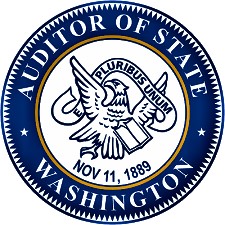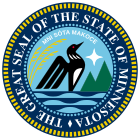
The U.S. Government Accountability Office (GAO) is an independent, nonpartisan government agency within the legislative branch that provides auditing, evaluative, and investigative services for the United States Congress. It is the supreme audit institution of the federal government of the United States. It identifies its core "mission values" as: accountability, integrity, and reliability. It is also known as the "congressional watchdog". The agency is headed by the Comptroller General of the United States. The comptroller general is appointed by the president with the advice and consent of the Senate. When a vacancy occurs in the office of the comptroller general, Congress establishes a commission to recommend individuals to the president. The commission consists of the following:

The state controller of California is a constitutional office in the executive branch of the government of the U.S. state of California. Thirty-three individuals have held the office of state controller since statehood. The incumbent is Malia Cohen, a Democrat. The state controller's main office is located at 300 Capitol Mall in Sacramento.

The state auditor of North Carolina is a statewide elected office in the U.S. state of North Carolina. The state auditor is a constitutional officer responsible for overseeing and reviewing the financial accounts of all state government agencies. The auditor also conducts performance audits of state agencies, ensures state agencies' accounting conforms with Generally Accepted Accounting Principles, evaluates the integrity of computer-generated information, and investigates the misuse of state funds or property. The incumbent is Jessica Holmes, who became state auditor on December 16, 2023.

The National Audit Office (NAO) is an independent Parliamentary body in the United Kingdom which is responsible for auditing central government departments, government agencies and non-departmental public bodies. The NAO also carries out value for money (VFM) audits into the administration of public policy.

The state treasurer of Minnesota was a constitutional officer in the executive branch of the U.S. state of Minnesota. Twenty-six individuals occupied the office of state treasurer from 1858 until the office's abolition in 2003. The final state treasurer was Carol C. Johnson, a DFLer.

The state auditor of Missouri is an elected constitutional officer in the executive branch of government of the U.S. state of Missouri. Thirty-eight individuals have occupied the office of state auditor since statehood. The incumbent is Scott Fitzpatrick, a Republican.

The New York state comptroller is an elected constitutional officer of the U.S. state of New York and head of the New York state government's Department of Audit and Control. Sixty-one individuals have held the office of State Comptroller since statehood. The incumbent is Thomas DiNapoli, a Democrat.

The Oklahoma State Auditor and Inspector is an elected Constitutional officer for the U.S. State of Oklahoma. The State Auditor and Inspector is responsible for auditing and prescribing bookkeeping standards of all government agencies and county treasurers within Oklahoma. The office in its current form is a consolidation of the office of State Auditor with that of the office of State Examiner and Inspector, both of which dated back to statehood in 1907. The two positions were combined in 1979 after passage of State Question 510 in 1975. Tom Daxon was the first person to hold the combined office and the first Republican as all previous occupants of either position were Democrats.
The New Jersey State Auditor is a constitutional officer appointed by the New Jersey Legislature and administratively placed within the Office of Legislative Services. The Auditor conducts financial and performance audits of State agencies, certain school districts, and vicinages of the Judiciary. The State Auditor also conducts studies on the operation, economy and efficiency of State-run or State-supported programs.

State auditors are fiscal officers lodged in the executive or legislative branches of U.S. state governments who serve as external auditors, program evaluators, financial controllers, bookkeepers, or inspectors general of public funds. The office of state auditor may be a creature of the state constitution or one created by statutory law.

The Comptroller of Illinois is a constitutional officer in the executive branch of government of the U.S. state of Illinois. Ten individuals have held the office of Comptroller since the enactment of the Illinois Constitution of 1970, replacing the prior office of Auditor of Public Accounts that was first created in 1799. The incumbent is Susana Mendoza, a Democrat.

The Great Seal of the State of Minnesota is the state seal of the U.S. state of Minnesota. It was adopted on May 11, 2024, alongside the state flag, for Statehood Day. It features a common loon, Minnesota's state bird, wild rice, the state grain, and the North Star, representing the state's motto, and is themed around Minnesota's nature.
The copyright status of works produced by the governments of states, territories, and municipalities in the United States varies. Copyright law is federal in the United States. Federal law expressly denies U.S. copyright protection to two types of government works: works of the U.S. federal government itself, and all edicts of any government regardless of level or whether or not foreign. Other than addressing these "edicts of government", U.S. federal law does not address copyrights of U.S. state and local government.

The state auditor of Washington is an independently elected constitutional officer in the executive branch of the government of the U.S. state of Washington. Eleven individuals have held the office since statehood. The incumbent is Pat McCarthy, a Democrat and the first woman to occupy the office.

The Nevada state controller is a constitutional officer in the executive branch of government of the U.S. state of Nevada. Twenty-two individuals have held the office of State Controller since statehood. The incumbent is Andy Matthews, a Republican.
The Minnesota Department of Management and Budget, otherwise abbreviated as MMB, is a cabinet-level state agency responsible for coordinating the financial management and personnel administration processes of state government.

The auditor of public accounts of Nebraska, more commonly known as the "state auditor", is an elected constitutional officer in the executive branch of the U.S. state of Nebraska. Twenty-five individuals have held the office of auditor of public accounts since statehood. The current auditor is Mike Foley, a Republican.

The state auditor of Utah is a constitutional officer in the executive branch of the U.S. state of Utah. Twenty-five individuals have held the office of state auditor since statehood. The incumbent is John Dougall, a Republican.

The state auditor of West Virginia is an elected constitutional officer in the executive branch of the U.S. state of West Virginia. The incumbent is JB McCuskey, a Republican.

The 2022 Minnesota State Auditor election was held on November 8, 2022, to elect the state auditor of the U.S. state of Minnesota. Incumbent DFLer Julie Blaha narrowly won re-election to a second term.






























